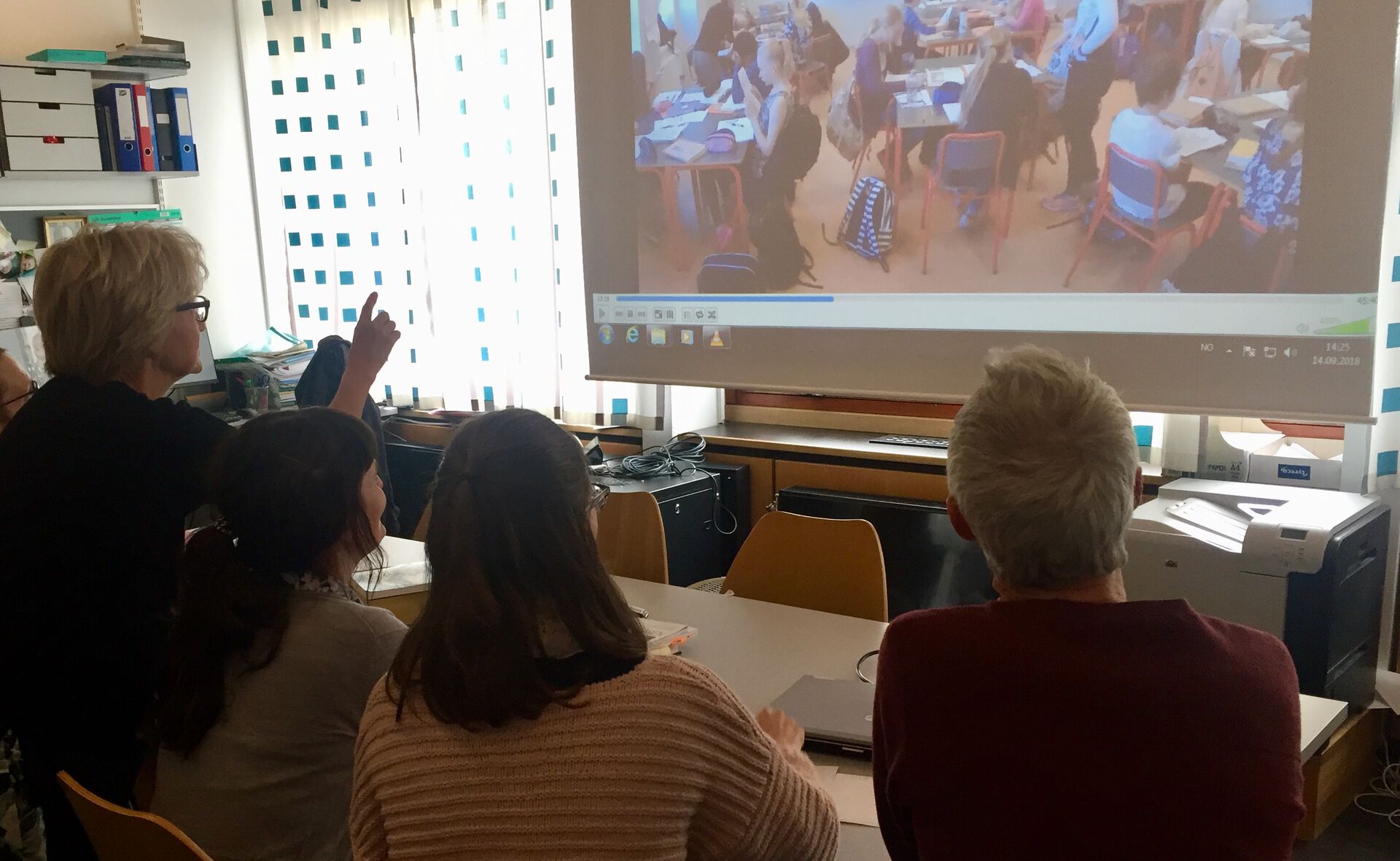There is a growing body of research that shows 'scaffolding' is highly valuable for supporting students’ learning, but previous studies from QUINT have shown how difficult it can be for teachers to implement in their everyday practice.
A recent paper by researchers Camilla Gudmundsdatter Magnusson, Jennifer Maria Luoto and Marte Blikstad-Balas, presented findings from a professional development project focused on teachers’ literacy scaffolding capabilities.
The project used video as a professional development tool with a group of Language Arts (L1) teachers in Norway, focusing on building specific scaffolding practices. The findings shed light on how this type of PD can be implemented, as well as the challenges that teachers face in participating in such programs.
Building better scaffolding
This study was part of a video-based professional development project called Video to Support Excellence in Teaching (VIST), conducted from 2018 to 2021 in a Norwegian urban school district.
What is 'scaffolding'?
The study focused on three dimensions of scaffolding that teachers can use to support students’ learning. These are:
- Feedback: Providing specific, targeted feedback to students on work they are doing.
- Modelling: Demonstrating a desired practice for students to imitate in their own work.
- Strategy instruction: Focusing on the use of flexible cognitive actions that can be applied in different learning situations.
Participating teachers had a series of their lessons video recorded and analysed by researchers who looked for areas where scaffolding practices could be discussed further with the teachers.
The teachers and VIST-mentors talked with each other about relevant clips in guided conversations, focusing on scaffolding practices.
Teachers then tried to implement those practices further into their next lessons, which were again recorded and discussed with the mentors.

Results
The study showed that teachers were in fact able to engage in teaching that involved significant scaffolding when they participated in the program.
“This was a critical finding for us,” says researcher Camilla Gudmundsdatter Magnusson, “especially because previous studies in Norway showed that these type of practices rarely occur naturally.”
Researchers observed that all teachers who took part in the program were able to change their practices to incorporate high levels of scaffolding techniques. There were differences between individual teachers in terms of the type and frequency of this scaffolding, but the program had a clear effect.
The aspects that proved most challenging for teachers were ‘modelling’ and ‘strategy instruction,’ a finding that has been reflected in other research.
Professional development in a demanding job
The study also illuminated a number of challenges teachers face when participating in this type of professional development program. Having the presence of mind to provide specific feedback in a sometimes hectic environment was one such challenge that teachers sighted.
“I try to be more conscious about providing feedback that is substantial and concrete,” said one teacher “but it’s difficult to incorporate because it doesn’t come automatically. When it’s a hectic school day it’s not so easy to remember and it can quickly become ‘yes, nice’—that type of feedback.”
Another teacher said of strategy instruction that “the map and the terrain don’t always match. I might have ideas about things that I want to implement, but when I show the students, they are not responsive to it. They just want facts. So, the challenge is to motivate them to listen to those strategies and use them.”

Perhaps unsurprisingly, all teachers who participated in the program pointed to time pressure and the extra workload as the main challenges, regardless of which school they worked at.
“We know teachers face a lot of hurdles in taking part in a PD program like this, particularly lack of time” says Magnusson. “We designed the program with this in mind in order to try and minimize the practical difficulties, but we see that there is a need for more flexibility in order to accommodate teachers’ individual needs.”
Helping teachers reflect
Teachers who participated in the project were unanimous in their assessment of video as a valuable tool for developing their practices. Though some expressed feelings of vulnerability in being observed, or concerns about video’s inability to capture the complete picture of what happens in a classroom, they all saw value in the reflection on their own practice that video afforded them.
“Videos are useful as a prompt for a shared discussion of a lesson,” says Magnusson, but they can’t capture all of the dynamics of teaching. This project has demonstrated the benefit of using video in professional development, but future projects should also incorporate other types of evidence, like the students’ experience for example.”
Reference
Camilla Gudmundsdatter Magnusson, Jennifer Maria Luoto & Marte Blikstad-Balas, Developing teachers’ literacy scaffolding practices—successes and challenges in a video-based longitudinal professional development intervention, in Teaching and Teacher Education, Volume 133, 2023.
https://doi.org/10.1016/j.tate.2023.104274
.jpg)